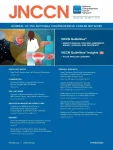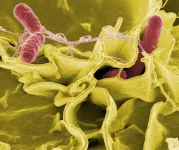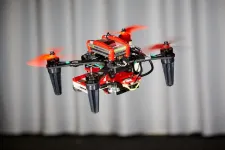(Press-News.org) Researchers at Brazil's National Space Research Institute (INPE), in partnership with colleagues in the United States, United Kingdom and South Africa, have recorded for the first time the formation and branching of luminous structures by lightning strikes.
Analyzing images captured by a super slow motion camera, they discovered why lightning strikes bifurcate and sometimes then form luminous structures interpreted by the human eye as flickers.
The study was supported by São Paulo Research Foundation - FAPESP. An article outlining its results is published in Scientific Reports.
"We managed to obtain the first optical observation of these phenomena and find a possible explanation for branching and flickering," Marcelo Magalhães Fares Saba, principal investigator for the project, told. Saba is a researcher in INPE's Atmospheric Electricity Group (ELAT).
The researchers used ultra high speed digital video cameras to record more than 200 upward flashes during summer thunderstorms in São Paulo City (Brazil) and Rapid City, South Dakota (USA) between 2008 and 2019. Upward lightning strikes start from the top of a tall building or other ground-based structure and propagate upward to the overlying cloud.
The upward flashes they recorded were triggered by positively charged cloud-to-ground lightning discharges, which are much more common, as described by the same INPE research group in a previous study (read more at: https://agencia.fapesp.br/31947).
"Upward lightning originates at the top of a tower or the lightning conductor on a skyscraper, for example, when the storm's electrical field is disturbed by a cloud-to-ground discharge as far away as 60 kilometers," Saba said.
Although the study conditions were very similar in Brazil and the US, luminous structures were observed in only three upward flashes, recorded in the US. These were formed by a positive leader discharge propagating toward the cloud base.
"The advantage of recording images of upward lightning is that they let us see the entire trajectory of these positive leaders from ground to cloud base. Once inside the cloud, they can no longer be seen," Saba said.
The researchers found that a low-luminosity discharge with a structure resembling a paintbrush sometimes forms at the tip of the positive leader. "We observed that this discharge, often referred to as a corona brush, may change direction, split in two, and define the path of the lightning flash and how it branches," Saba said.
When an upward flash branches successfully, it may proceed to the left or right. When branching fails, the corona brush may give rise to very short segments as bright as the leader itself. These segments first appear milliseconds after the corona brush splits, and pulsate as the leader propagates upward toward the cloud base, the videos show.
"The flickers are recurring failed attempts to start a branch," Saba said, adding that the flickers may explain why multiple lightning discharges are frequent, but more studies are needed to verify this theory.
INFORMATION:
About São Paulo Research Foundation (FAPESP)
The São Paulo Research Foundation (FAPESP) is a public institution with the mission of supporting scientific research in all fields of knowledge by awarding scholarships, fellowships and grants to investigators linked with higher education and research institutions in the State of São Paulo, Brazil. FAPESP is aware that the very best research can only be done by working with the best researchers internationally. Therefore, it has established partnerships with funding agencies, higher education, private companies, and research organizations in other countries known for the quality of their research and has been encouraging scientists funded by its grants to further develop their international collaboration. You can learn more about FAPESP at http://www.fapesp.br/en and visit FAPESP news agency at http://www.agencia.fapesp.br/en to keep updated with the latest scientific breakthroughs FAPESP helps achieve through its many programs, awards and research centers. You may also subscribe to FAPESP news agency at http://agencia.fapesp.br/subscribe.
Spatial isolation is known to promote speciation - but researchers at Ludwig-Maximilians-Universitaet (LMU) in Munich have now shown that, at least in yeast, the opposite is also true. New ecological variants can also evolve within thoroughly mixed populations.
The idea that speciation is based on the selection of variants that are better adapted to the local environmental conditions is at the heart of Charles Darwin's theory of the origin of species - and it is now known to be a central component of biological evolution, and thus of biodiversity. Geographic isolation of populations is often regarded as a necessary condition for ecotypes to diverge ...
PLYMOUTH MEETING, PA [January 13, 2021] -- New research in the January 2021 issue of JNCCN--Journal of the National Comprehensive Cancer Network finds more than a third of eligible people miss timely screening tests for colorectal cancer and at least a quarter appear to miss timely screening tests for breast and cervical cancers. The study comes from the University of Alberta, Faculty of Medicine and Dentistry in Alberta, Canada, with findings based on self-reported results from the Canadian Community Health Survey (CCHS) from 2007-2016. According to the author, the results also ...
WHAT:
Salmonella enterica serovar Typhimurium bacteria (S. Typhimurium) commonly cause human gastroenteritis, inflammation of the lining of the intestines. The bacteria live inside the gut and can infect the epithelial cells that line its surface. Many studies have shown that Salmonella use a "run-and-tumble" method of short swimming periods (runs) punctuated by tumbles when they randomly change direction, but how they move within the gut is not well understood.
National Institutes of Health scientists and their colleagues believe they have identified a S. Typhimurium protein, McpC ...
Research into the neuronal basis of emotion processing has so far mostly taken place in the laboratory, i.e. in unrealistic conditions. Bochum-based biopsychologists have now studied couples in more natural conditions. Using electroencephalography (EEG), they recorded the brain activity of romantic couples at home while they cuddled, kissed or talked about happy memories together. The results confirmed the theory that positive emotions are mainly processed in the left half of the brain.
A group led by Dr. Julian Packheiser, Gesa Berretz, Celine Bahr, Lynn Schockenhoff and Professor Sebastian Ocklenburg from the Department of Biopsychology at Ruhr-Universität Bochum ...
(Boston)--Researchers from Boston University School of Medicine (BUSM) provide a new genomics resource that details the small RNA transcriptomes (gene expression) of four bio-medically important mosquito species.
This is the first study to provide a platform for biologists to compare the characteristics of these small RNAs between these four mosquitoes as well as the most widely used insects for genetic experiments, the fruit fly, Drosophila. Although previous studies looked at each of the individual mosquito species separately, this study is the first to allow comparisons between all four species.
"Although ...
As anxious passengers are often reassured, commercial aircrafts can easily continue to fly even if one of the engines stops working. But for drones with four propellers - also known as quadcopters - the failure of one motor is a bigger problem. With only three rotors working, the drone loses stability and inevitably crashes unless an emergency control strategy sets in.
Researchers at the University of Zurich and the Delft University of Technology have now found a solution to this problem: They show that information from onboard cameras can be used to stabilize the drone and keep it flying autonomously after one rotor suddenly gives out.
Spinning like a ballerina
"When one rotor fails, the drone begins to spin ...
A recent Point of Reference article, "The meat of the matter: Environmental dissemination of beef cattle agrochemicals," published in Environmental Toxicology and Chemistry, points at synthetic chemical cocktails being emitted from cattle feed yards into the environment and how they can impact our ecosystem and our health.
Industrial meat production facilities have a bad reputation for their impact on the environment. Concentrated animal feeding operations (CAFOs) are known to release greenhouse gases related to global warming and for discharge of manure to watersheds, which affects water quality. A less publicized impact of modern beef production is the excessive use of ...
Our immune system is never idle. Their task is to detect and eliminate invasive pathogens, and they have no time to lose. The adaptive immune system identifies infectious organisms by recognizing foreign proteins on the surfaces of bacteria, viruses and unicellular protozoans. The interaction of these antigens with immune cells triggers a series of downstream events, which in most cases leads to the elimination of the pathogen.
But pathogenic organisms have developed strategies that enable them to escape detection by the immune system, and the strategies employed by remotely related organisms are often remarkably similar to each other. One way of confusing the immune system is to increase the structural heterogeneity of the antigens it encounters. ...
(Philadelphia, PA) - Like a failing fuel pump that causes a loss of engine power in a car, a diseased heart can take a serious toll on the body's performance. For some patients, tasks like walking up a flight of stairs or walking across a room eventually turn into exhausting endeavors. This is because, over time, regardless of the underlying cause, heart damage typically progresses, owing to a constant barrage of oxidative stress and toxic lipids that alter heart cell energetics and, ultimately, the ability of the heart to function normally.
Oxidative stress occurs when harmful oxygen-containing molecules outnumber helpful antioxidants, leading to damaging reactions with proteins, DNA, and other cell components. ...
New data released this week by Australian researchers reveals the impact of the COVID-19 lockdown period on aeromedical retrievals in rural and remote regions.
Researchers say while the social isolation measures led to a reduction in overall aeromedical activity during the lockdown in 2020, once the restrictions were lifted, evacuations increased significantly.
These findings are published in the Internal Medicine Journal, comparing aeromedical evacuation trends in Australia during the pre-restriction, lockdown and post-restriction periods last ...




